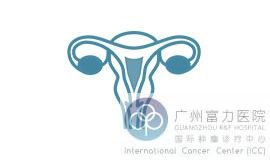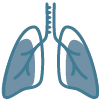Causes of Cervical Cancer

Global cervical cancer status and prevention and treatment
Cervical cancer is a major threat to women's health worldwide. According to the latest statistics from the International Agency for Research on Cancer (IARC), cervical cancer ranks fourth in the incidence of female cancer, with approximately 600,000 new cases each year and 340,000 deaths among women. Among them, developing countries account for 85% of global cases, and the prevention and control situation is particularly severe.
The nature and early detection of cervical cancer
Cervical cancer is a malignant tumor that occurs in the cervix of the uterus. Persistent infection with high-risk human papillomavirus (HPV) is its main cause. It is worth noting that early cervical cancer usually has no obvious symptoms, but regular cervical screening (such as HPV testing combined with cervical smear) can effectively detect precancerous lesions. Studies have shown that standardized screening can reduce cervical cancer mortality by more than 80%.
Treatment Advances and Fertility Preservation
Regarding the core question of "Can cervical cancer be cured?", modern medicine has given a positive answer: the 5-year survival rate of early-stage patients can reach over 90%. For advanced and late-stage cases, comprehensive treatment (surgery + radiochemotherapy + targeted therapy) significantly improves prognosis. It is particularly noteworthy that emerging minimally invasive treatment technologies (such as radical cervical resection and laparoscopic surgery) can preserve the uterus and reproductive function while accurately removing lesions, making it possible for young patients to have children.
Classification of cervical cancer
Squamous cell carcinoma: It is divided into grade III according to histological differentiation. Grade one is well-differentiated squamous cell carcinoma, grade two is moderately differentiated squamous cell carcinoma, and grade three is poorly differentiated squamous cell carcinoma. The lower the degree of differentiation, the higher the malignancy.
Adenocarcinoma: accounts for 15% to 20% of cervical cancer. There are two main histological types, mucinous adenocarcinoma and malignant adenocarcinoma. The incidence rate has been increasing in recent years, especially in young women.
Adenosquamous carcinoma: It accounts for 3% to 5% of cervical cancer. It has the characteristics of both adenocarcinoma and squamous cell carcinoma. It is highly invasive and requires an individualized treatment plan.
For more cancer knowledge, please click on the online doctor for consultation
Cervical cancer is one of the most common gynecological malignancies. Its causes mainly include the following aspects:
● HPV infection
Persistent infection with high-risk HPV: This is a major risk factor for cervical cancer. There are many subtypes of HPV virus, among which high-risk types such as 16, 18, 31, 33, 45, 52, and 58 are closely related to the occurrence of cervical cancer. When high-risk HPV virus infects cervical epithelial cells, its viral genes can be integrated into the host cell genome, causing abnormal cell proliferation and differentiation, and gradually developing into precancerous lesions and cervical cancer.
● Sexual behavior and childbirth factors
Premature sexual activity: During puberty, women’s cervix is not yet fully developed and their resistance to carcinogenic factors is weak. If sexual intercourse occurs at this time, viruses such as HPV can easily invade the cervical epithelial cells, increasing the risk of cervical cancer.
Multiple sexual partners: The more sexual partners you have, the greater the chance of being infected with HPV and the risk of cervical cancer.
Multiple pregnancies and births: Excessive births, cervical injury during delivery, cervical lacerations after delivery, etc. may reduce the local resistance of the cervix, making it susceptible to invasion by pathogens such as HPV, thereby increasing the incidence of cervical cancer.
● Other factors
Smoking: Nicotine, tar and other carcinogens in cigarettes can reach the cervix through the blood circulation, damage cervical tissue, reduce local immunity, increase susceptibility to HPV infection, and thus promote the occurrence and development of cervical cancer.
Impaired immune function: If you have AIDS or use immunosuppressants for a long time, the body's immune function will be weakened and the HPV virus cannot be effectively eliminated, which increases the risk of cervical cancer.
Long-term oral contraceptives: Long-term use of oral contraceptives may affect the hormone levels in women's bodies, change the local microenvironment of the cervix, increase the risk of HPV infection, and thus be associated with the occurrence of cervical cancer. However, the specific impact mechanism needs further study.
The occurrence of cervical cancer is a multi-factor, multi-step process, which usually requires the combined action of multiple factors and takes a long time to develop into cervical cancer. Understanding these causes can help you take effective preventive measures, such as getting the HPV vaccine, maintaining a healthy lifestyle, and undergoing regular cervical cancer screening to reduce the risk of cervical cancer.
Use precise technology to create more possibilities for life.
The Cancer Center of Guangzhou R&F Hospital has opened an era of "chemotherapy-free survival" for cancer patients, winning a lasting victory for life. If you or your family are facing difficulties in cancer treatment, please contact the Guangzhou R&F Hospital Cancer Center. We offer multilingual medical history consultations, contact us today to get an assessment of your treatment eligibility.
Contact Us:
email: rfcancercenter@gmail.com |
WhatsApp: +86 18565157271











































